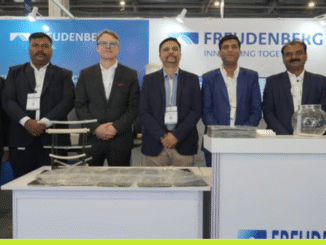
As Chief Dream Merchant at Quench Chargers, Ravin Mirchandani stands at the intersection of technology, user experience, and infrastructure reliability. In this interview, he discusses the evolving landscape of EV charging in India, the industry’s persistent pain points, and how Quench’s upcoming ultra-slim chargers are set to redefine urban charging.
The State of India’s Charging Infrastructure:
Progress and Persistent Gaps
Mirchandani acknowledges that India’s EV charging landscape has transformed dramatically over the past five years. “It used to be ‘Build it and they will come’—now, the question is when will the return on investments start to show up,” he notes. The network has expanded rapidly, enabling seamless drives from Kashmir to Kanyakumari, and the electrification of city bus fleets has improved urban air quality and commuter experience.
Yet, challenges remain: the east and northeast lag in electrification, and public charging stations often see low demand, leading to funding being channeled more toward fleet operations than private vehicles.
Another critical issue is supply chain localization—especially for rare earth magnets and power electronics—to reduce geopolitical risks. “A common charging protocol for two- and three-wheelers is still elusive,” Mirchandani adds, highlighting the need for industry-wide standards.
Quench Chargers’ Approach:
Local Innovation, Relentless Reliability
Quench Chargers has chosen a path of deep localization and innovation. “We took the hard road early,” Mirchandani says, “designing and making our chargers in India instead of importing kits from China.” This decision meant higher initial costs and longer development cycles but has resulted in robust, locally-adapted technology. Today, Quench supports major Charge Point Operators (CPOs) and OEMs across India, with a global presence monitored 24/7 from their Pune network operations center.
Reliability is at the core of Quench’s philosophy. Resilience means the charger doesn’t fail, and reliability means when it does, we bring it back up within 12 to 24 hours,” Mirchandani explains. Their chargers are engineered for India’s harshest environments, from high heat and dust to power outages, and are already deployed globally, including in Europe and Australia.
Ultra-Slim Chargers:
Solving Urban and Operational Pain Points
The upcoming ultra-slim chargers are Quench’s answer to the unique spatial and operational challenges of Indian and Southeast Asian markets. “Our first product followed a European architecture, but Indian cities have their own needs—limited space in underground parking, the necessity for wall-mounted units, and front-side maintenance access,” Mirchandani explains. The new slim range, spanning 60–240kW, is almost half the size of conventional chargers, yet delivers higher-grade performance and efficiency.
Key points addressed include:
- Space constraints: Slim design fits tight urban locations and underground parking.
- Serviceability: All maintenance can be done from the front and sides, minimizing operational disruption.
- Thermal management: Enhanced cooling for India’s high-heat environments.
- Cost competitiveness: Designed to match the price expectations set by Chinese imports, but with superior reliability and service.
Battery Energy Storage Systems (BESS):
Boosting Reliability and Grid Independence
As urbanization and electrification intensify, Mirchandani sees BESS as pivotal, especially for underserved or remote locations. “At any time, 10–12% of chargers in India are unusable due to power unavailability,” he points out. Quench’s BESS-integrated DC/DC chargers allow CPOs to provide reliable service even where the grid is weak or intermittent. The system uses lithium battery walls and proprietary energy management to store and deliver power efficiently, integrating renewable sources like solar where possible.
Looking Ahead:
The Next 3–5 Years
Mirchandani predicts a shift toward higher-capacity chargers—240kW, 360kW, and even 480kW—for fleet and mega-hub operations. “Battery-assisted chargers will become standard to improve reliability and alleviate grid pressure in high-demand areas,” he says. He also foresees rapid innovation, with China and Europe pushing new protocols and faster charging experiences that could rival the refueling time of petrol vehicles.
Quench is preparing for this future by investing in supply chain independence, continuous product innovation, and smart energy management. “Our vision is to provide relentlessly reliable, locally-adapted charging solutions that enable India’s EV revolution—one slim, powerful charger at a time,” Mirchandani concludes.
Quench Chargers, under Mirchandani’s leadership, is not just building hardware—they’re building the backbone for India’s electric mobility ambitions, ensuring that infrastructure keeps pace with the nation’s electrified dreams.






